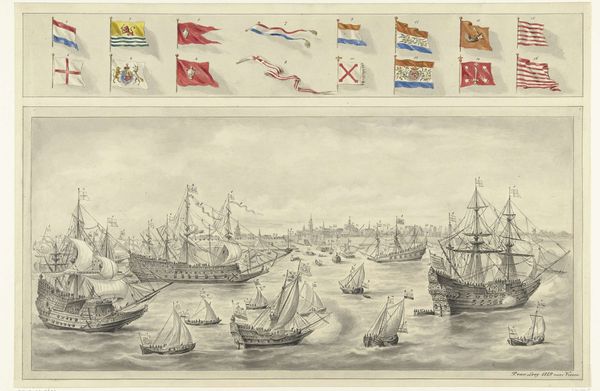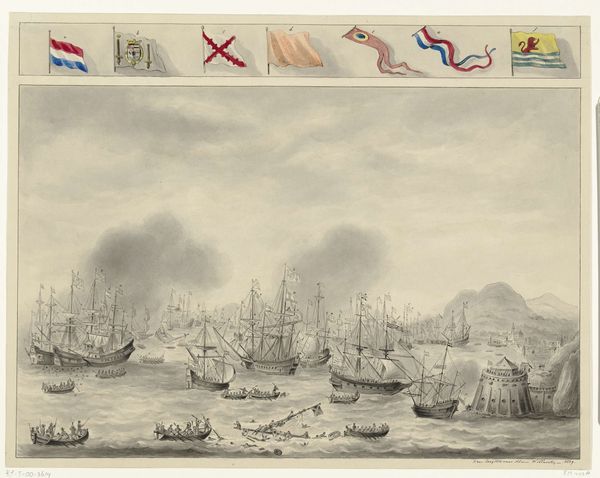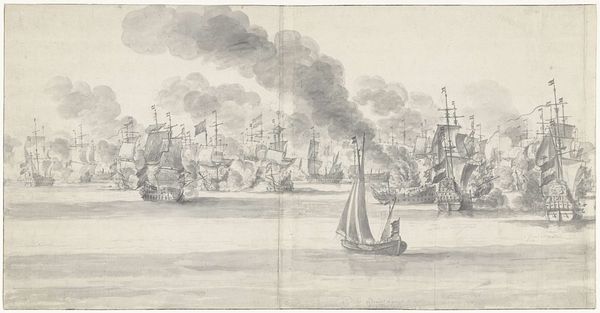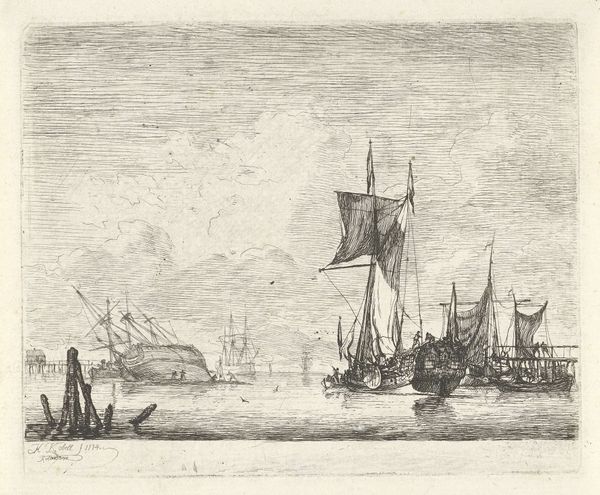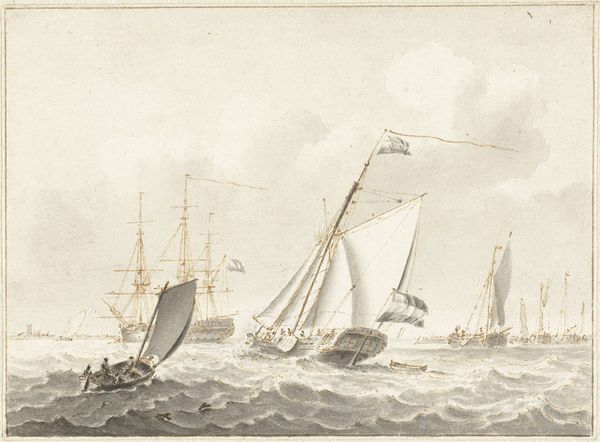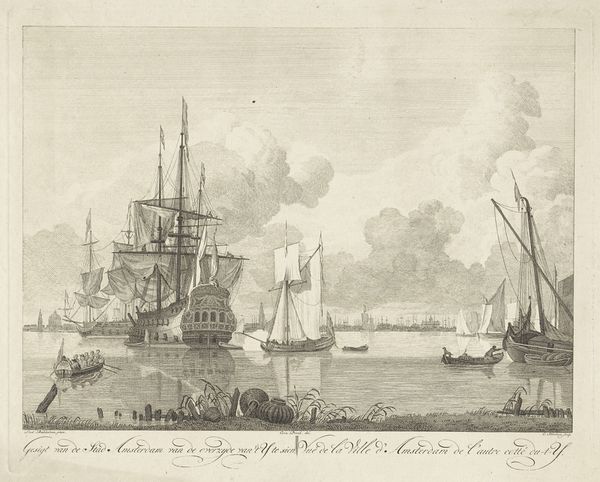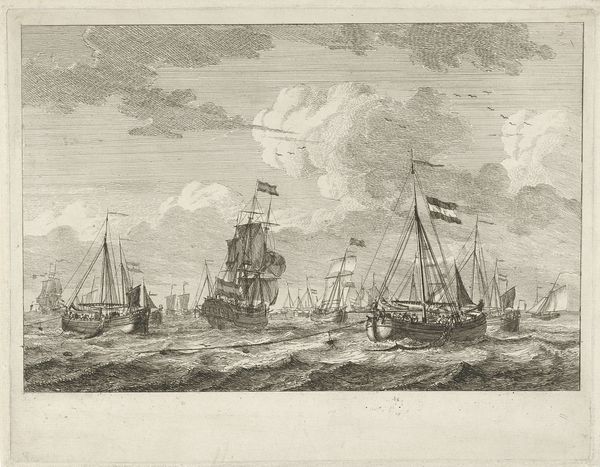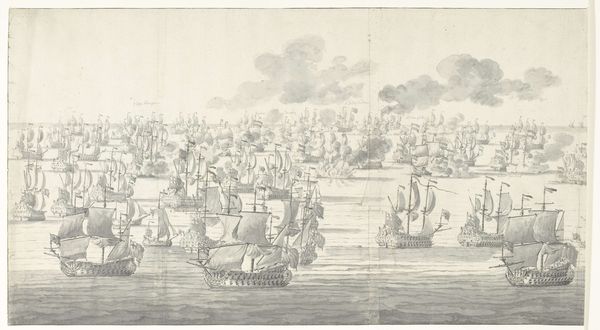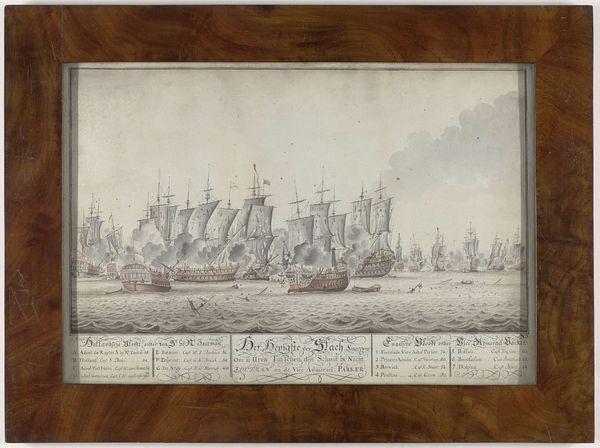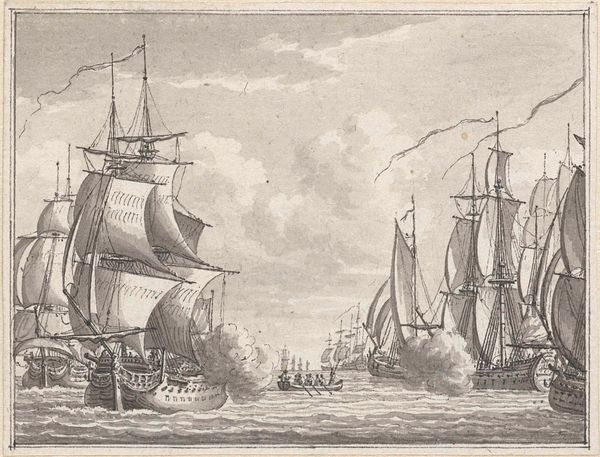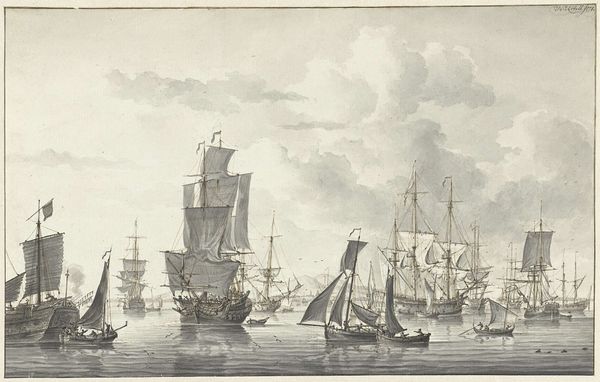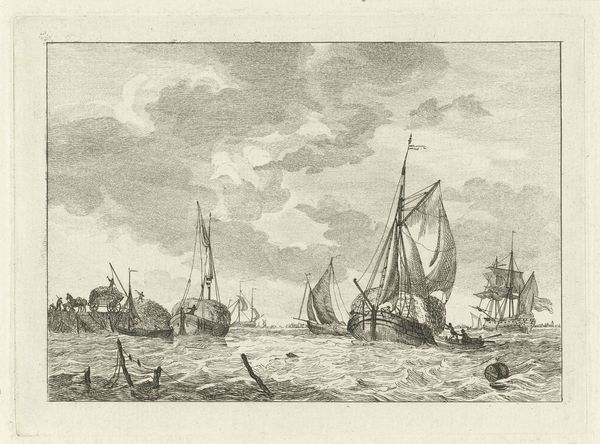
Aankomst van Frederik V en Elisabeth Stuart te Vlissingen, 1613 1880
0:00
0:00
pietervanlooy
Rijksmuseum
Dimensions: height 335 mm, width 510 mm
Copyright: Rijks Museum: Open Domain
Editor: This is "Arrival of Frederik V and Elisabeth Stuart in Vlissingen, 1613," a drawing in ink, pencil, and watercolour on paper by Pieter van Looy, created around 1880. It feels incredibly detailed and gives off a sense of grand historical importance, but the subdued color palette keeps it grounded. What stands out to you as you look at this piece? Curator: For me, this drawing isn't just a historical depiction, but an entry point to understanding power dynamics of the time. We see Frederick and Elizabeth, key figures in a period rife with religious and political tensions. Their arrival symbolizes shifting alliances. The ships and the bustling harbor, rendered with such precision, speak to the Netherlands’ naval strength and burgeoning global influence. Considering the piece was made in 1880, why revisit this event? What commentary might Van Looy be making? Editor: Maybe it's about national pride or a reflection on a time of Dutch prosperity and influence? Were there any particular social issues relevant to the 1880s that might relate to the event's original historical context? Curator: Precisely. Think about the rise of nationalism in 19th-century Europe. Recalling such moments reinforces a sense of shared history and identity. Beyond that, the drawing implicitly addresses ideas of gender and royalty. Elizabeth's presence challenges conventional expectations; she was a politically astute figure in her own right, not merely a queen consort. Van Looy prompts us to consider these complex layers, doesn't he? How does that reading influence your initial perception? Editor: I didn't immediately see all of those layers, I was mostly thinking of ships and history. I am now more conscious of the many interpretations layered beneath the surface representation of this historical event. Thank you. Curator: And I appreciate your perspective. It's a vital reminder that our own assumptions shape our interpretations.
Comments
No comments
Be the first to comment and join the conversation on the ultimate creative platform.
